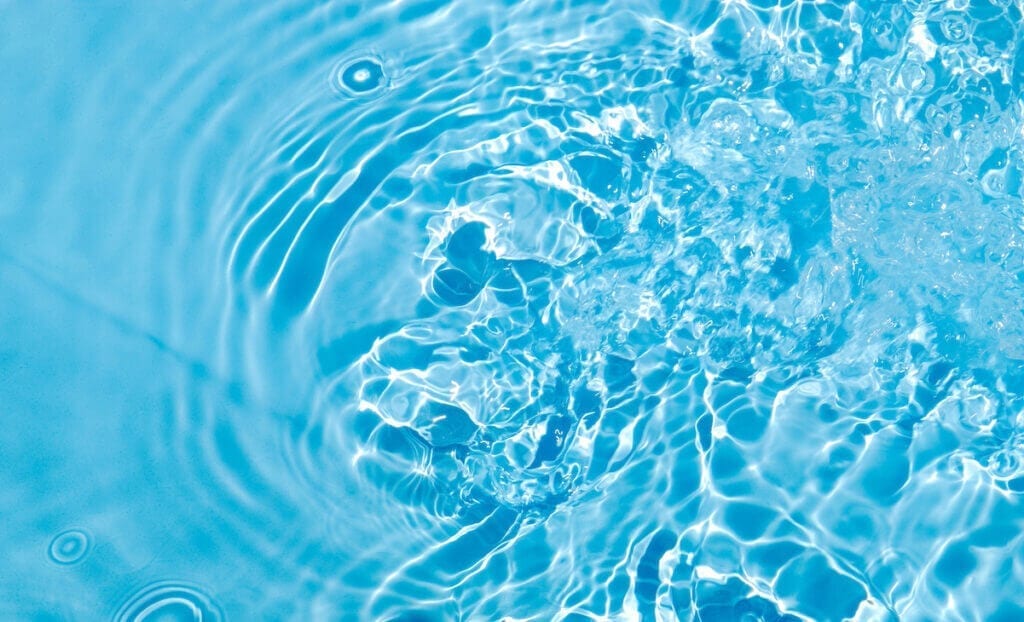To keep your pool clean, safe, and healthy for the best possible swimming experience there are specific tasks that must be completed before diving in. To ensure crisp, freshwater one of those tasks to check off the list is shocking your pool. Shocking your swimming pool or spa has always been good practice for recreational water management. Regardless of the type of sanitation system you’ve chosen, shocking will typically be required.
Why Do I Need To Shock My Pool?
Pools are shocked to keep the water healthy and clean by removing algae and bacteria after heavy bather use or contamination events. In addition, pool shocking is used to eliminate harmful combined chlorine in the water.
Also known as chloramines, combined chlorine can cause “pool” odor, red eyes, irritated skin, and health issues. Combined chlorine is a disinfection by-product (DBP) that forms when chlorine reacts with contaminants, like lotions, sweat, and urine in the pool water.
You may want to shock your pool in certain situations, such as:
- After a new pool construction is completed and there is a fresh fill from any source of water.
- Opening your pool for the season after it has been closed for the winter.
- After heavy bather loading from pool parties.
- When pool or spa water temperatures are consistently high from sun exposure or heating the water regularly.
- After heavy rainfalls that can add organic loading to the water.
What Is Pool Shocking?
The term shocking means to add enough chlorine to the pool or spa water to destroy all combined chlorine present in the water. In detail, the process of pool shocking means adding chlorine or non-chlorine shock to your pool in order to raise the “free chlorine” level. The goal is to raise “free chlorine” levels to a point that destroys unwanted contaminants, such as algae, chloramines, and bacteria.
A common term for using a pool shock to destroy combined chlorine is called “breakpoint chlorination.” Usually, reaching “breakpoint chlorination” will require adding 10 times the amount of combined chlorine present in parts per million (ppm).
Here are some things to keep in mind before using pool shock:
- No matter what type of pool shock you use, it’s important that you follow the instructions on the shock label very carefully.
- Make sure that the pool shock chemicals are stored in a cool and dry place.
- Always apply pool shock chemicals directly to pool or spa water.
When Should I Shock My Pool?
The best time of day to shock your pool is in the evening after sunset so that the sun’s UV rays will not evaporate the shock from the water and will allow the shock to oxidize the water for a longer length of time. You’ll want to choose a time when your swimmers are finished and out of the pool for the day because you don’t want anyone in the pool during this time.
Make sure to use protection when handling shock such as eyewear and gloves. Prepare the shock by following the manufacturer’s recommendations. Once you shock the pool run the filtration for 24 hours. Make sure to recheck your pool chemistry the next day and balance accordingly.
What Type of Pool Shock Should I Use?
The type of shock you should use will depend on your water chemistry and the reason you’re shocking.
If the water is green, you should use a cal-hypo shock. However, if you’re shocking as part of weekly maintenance and your pool looks clean, you can use sodium dichlor, potassium monopersulfate or sodium hypochlorite.
Typically, it’s recommended to switch between a chlorine shock and a non-chlorine shock every other week or before or after a heavy bather load.
Here are four main types of pool shock:
1. Calcium Hypochlorite
Calcium Hypochlorite, or cal-hypo, is the most powerful and fast-acting shock available. This popular shock method dissolves quickly and is unstabilized. Unstabilized shocks burn off from the sun’s UV rays and does not increase cyanuric acid levels. Cal-hypo shocks will also slightly raise your pool’s pH levels. To avoid damage to your pool surface, be sure to always pre-dissolve a cal-hypo shock before putting it in your pool. Additionally, cal-hypo shocks should be added in the evening when the sun goes down. You can enjoy your swimming pool after it returns to it’s typical chlorine levels.
2. Sodium Dichlor
Sodium dichlor, also known as dichloro-s-triazinetrione or dichloroisocyanuric acid, is a stabilized, slow-dissolving shock method. Unlike cal-hypo, dichlor will dissolve slowly and raise cyanuric acid levels. Typically, sodium dichlor will increase the pool’s pH levels. In addition to a shock treatment, dichlor can be used as a sanitizer and oxidizer. When using dichlor as a shock method, use 1 pound per 10,000 gallons of water. Similarly to cal-hypo, a dichlor shock should be added after the sun goes down. Note: This is not our recommended shock of choice due to it’s cyanuric acid content. It is not CYA Smart™.
3. Potassium Monopersulfate (Non-Chlorine Shock)
Potassium monopersulfate, or MPS, is a chlorine alternative oxygen-based shock type. A MPS shock can be used to oxidize, destroy contaminants and help chlorine operate more efficiently. Unlike both cal-hypo and dichlor, MPS won’t change your pool’s cyanuric acid levels. Known as the “shock and swim” method, MPS can be used at any time of the day. You can start swimming nearly 15 minutes after using this shock.
4. Sodium Hypochlorite (Bleach or Liquid Shock)
Sodium hypochlorite, also known as bleach or liquid shock, is a “heavy-duty” type of pool shock that isn’t typically used in home pools. Sodium hypochlorite is quick-dissolving and, unlike cal-hypo, does not need to be pre-dissolved before putting it in your pool. Sodium hypochlorite shock is typically delivered by trucks and stored in 50-gallon vats. It is often used in commercial pools, such as hotels, condos and health club pools. This commercial strength liquid chlorine is also used by laundry and dry cleaners and has a strong concentration of 12.5 percent sodium hypochlorite. By contrast, most store brand bleach sold in one-gallon jugs are just 5 percent or less. If you buy liquid bleach for your pool, be sure to get unscented and unaltered, regular bleach.
How Does Clear Comfort’s AOP Affect Pool Shocking?
By lowering chlorine demand down to drinking-water levels, Clear Comfort’s advanced oxidation, or AOP, pool treatment system reduces the frequency you need to shock your pool. With fewer chemicals needed to achieve clear, clean, and healthy water quality, Clear Comfort’s AOP pool system reduces your time spent on balancing chemicals.
Using a patented and award-winning AOP technology, Clear Comfort uses powerful hydroxyl radicals that quickly destroy unwanted contaminants in pool and spa water, thus the reason for dramatically reducing chemical consumption, combined chlorine, and other DBPs. With Clear Comfort, pools, spas, hydrotherapy tubs, water parks, and more can get the best water quality with the least maintenance allowing you and your family to Swim Happy™.
To learn more about how to maintain your pool with Clear Comfort’s AOP, read our blog “How to take care of a Clear Comfort pool [Download].”
* Originally published on: April 19, 2018



Louie Warco
Customer Success Manager




